Jaipur is the Pink City of India and unique in so many ways. Anyone who likes history, architecture, and beauty would simply want to stay here forever!
Founded in the early 18th century by Maharaja Sawai Jai Singh II, Jaipur is renowned for its well-planned streets, awe-inspiring forts, and majestic palaces.
Jaipur offers some of the best historical places that you can visit anywhere in the world. Let us have a look at our list best historical places in Jaipur that you must visit.
1. Amer Fort – The Long-Living Jewel of Jaipur
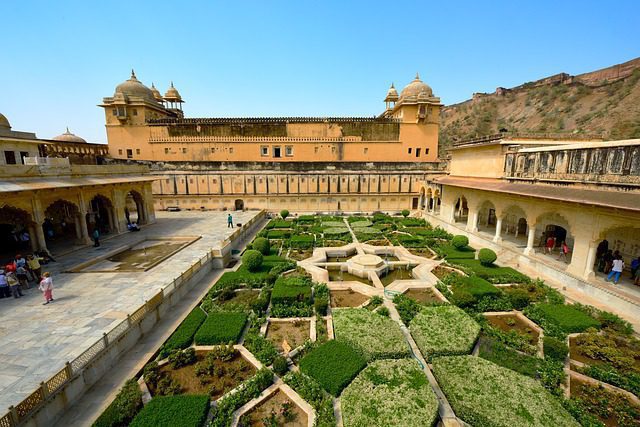
If there ever existed a term called flagship fort it has to be Amer Fort among the many great others. Considered one of the most attractive forts of Jaipur, Amer Fort is one of those historic places in Jaipur that you should never miss.
About 11 kilometers from the city of Jaipur. This fort is a UNESCO World Heritage Site and is one of the most well-known tourist attractions in the region.
It was constructed by Raja Man Singh I in the late 16th century and later expanded by subsequent rulers. It is renowned for its artistic Hindu-style elements as well as its formidable defensive architecture. The fort is built with red sandstone and marble, displaying a blend of Rajput and Mughal architectural styles.
Key features of Amer Fort include its imposing main entrance, known as the Suraj Pol or Sun Gate, which leads to the main courtyard called Jaleb Chowk. From there, visitors can proceed to various sections of the fort, including the Diwan-i-Aam (Hall of Public Audience), the Diwan-i-Khas (Hall of Private Audience), the Sheesh Mahal (Mirror Palace), and the Sukh Niwas (Hall of Pleasure).
One of the most captivating aspects of Amer Fort is the Sheesh Mahal, which is adorned with intricate mirror work that reflects light in a dazzling display. Additionally, the fort offers panoramic views of the surrounding hills and Maota Lake.
There are many historical attractions for the visitors like Sheesh Mahal, Jal Mandir, Diwan-i-Aam, and Khaas which leave the visitors stunned by their beauty.
Timings: 9 AM-4:30 PM
Entry Fee: INR 200 foreigner, INR 25 Indians
2. Jantar Mantar – The Largest Sundial of the World
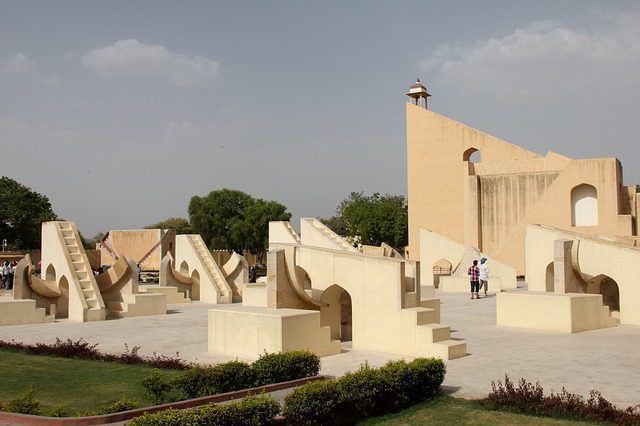
Jantar Mantar is a standing proof of the scientific minds of Indians. Unlike the many other historic monuments of Jaipur, the Jantar Mantar is one of those historic monuments which still stand as a piece of running evidence for the beauty of the amazing and magnificent ancient work.
Janta Mantar was built in the year 1727 and is among the most popular tourist attractions in Jaipur. You can find the place located very near to the city palace of Jaipur.
Timings: 9 AM-5 PM
Entry fee: INR 50 Indians, INR 200 foreigners
3. City Palace – A Living Witness to the History of Jaipur
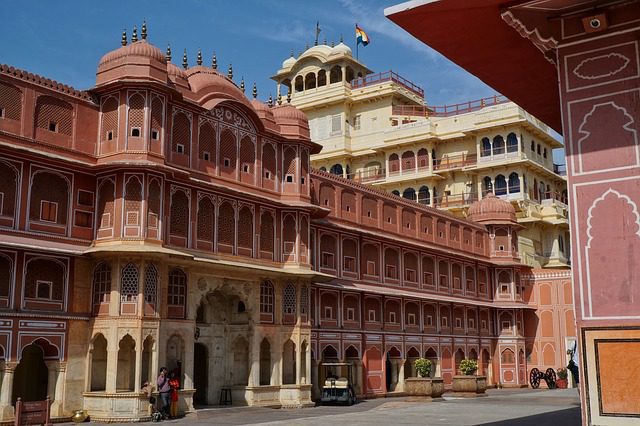
The city palace is a complex of beautiful courtyards, gardens, and buildings. It’s right in the center of the Old City. The outer wall was built by Jai Singh II, but within it, the palace has been enlarged and adapted over the centuries.
There are palace buildings from different eras, some dating from the early 20th century. It is a striking blend of Rajasthani and Mughal architecture.
Timings: 9 AM-5 PM
Entry fee: INR 50 no extra cost for foreigners
4. Jaigarh Fort – The Home of the World’s Largest Cannon on Wheels
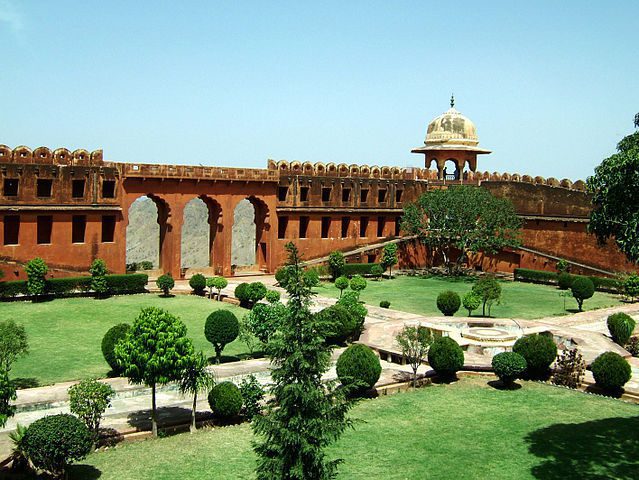
Jaigarh Fort is situated on the promontory called the Cheel ka Teela of the Aravalli range; it overlooks the Amer Fort and the Maota Lake, near Amer in Jaipur, Rajasthan, India.
The fort was built by Jai Singh II in 1726 to protect the Amer Fort and its palace complex and was named after him.
Timings: 9 AM-4 PM
Entry fee: INR 15 Indians, INR 100 foreigners
5. Hawa Mahal – The Massive Ancient Construction
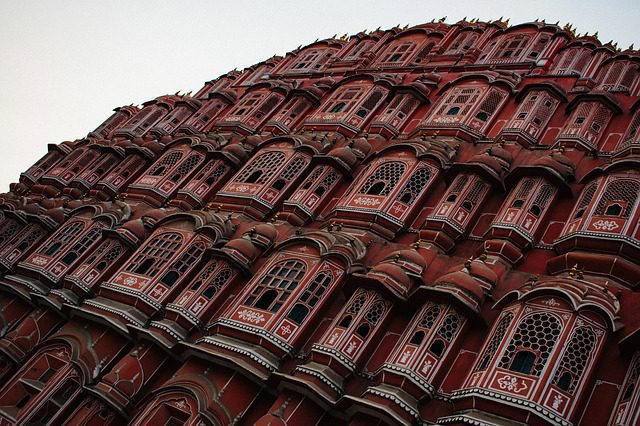
Situated at Badi Choupad, Pink City of Jaipur, Hawa Mahal was built in 1799. It has 953 windows on the outside walls.
The honeycomb-shaped and beautifully carved windows allow the breeze to blow through the palace and make it a perfect summer palace. It was built as an extension to the City Palace nearby. See below for more information about Hawa Mahal.
Timings: 9 AM-4:30 PM
Entry fee: INR 50 Indians, INR 200 foreigners
6. Nahargarh Fort – A Calm place with legends
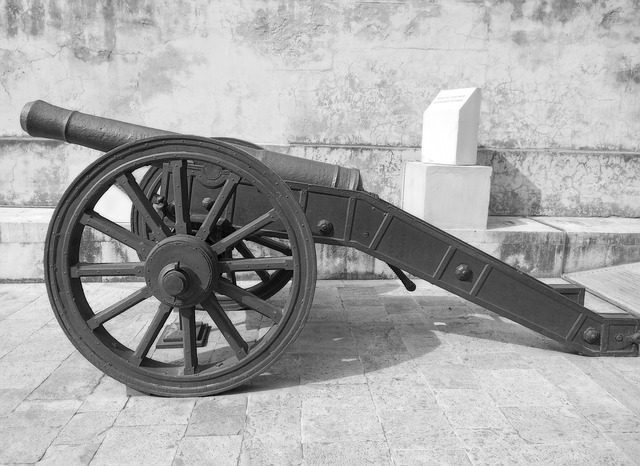
Nahargarh Fort was commissioned in the year 1734 by Maharaja Sawai Jai Singh II, the founder of Jaipur. Placed on the lofty Aravalli Hills, the fort was a retreat palace for the ruler. Nahargarh and Jaigarh fort are connected through their extended ramparts.
There is also a legend of haunted events of the fort. It is believed that the fort was cursed by the spirit of Nahar Singh Bhomia, a Rathore prince. Maharaja Sawai Jai Singh found this property which once belonged to the said prince and the Maharaja thought about raising a fort here. But, the spirit of the prince was not happy with the idea. Nevertheless, the construction started.
The part of the construction that was done in the morning was found destroyed the next day. When Maharaja Sawai Singh came to know of this, he built a small fort inside the premises of the fort and dedicated it to the prince. Later on, a small temple was also built here. The prince’s spirit was now happy.
Timings: 10 AM-5:30 PM
Entry fee: INR 50 Indians, INR 200 foreigners
7. Jal Mahal – A Palace in the Middle of a Lake
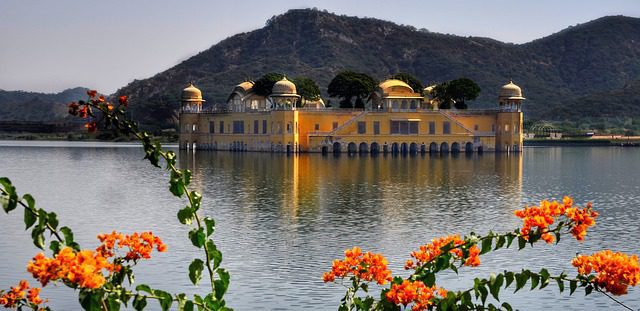
Jal Mahal is a palace in the middle of the Man Sagar Lake in Jaipur city, the capital of the state of Rajasthan, India. The palace and the lake around it were renovated and enlarged in the 18th century by Maharaja Jai Singh II of Amber.
It is Possibly the most serene sight amidst the chaos of Jaipur is the beautiful Jal Mahal Jaipur, the Water Palace. This low-rise symmetrical palace, which once was a shooting lodge for the Maharajah, appears to float in the center of Sagar Lake.
The light sand-colored stone walls of the Jal Mahal Jaipur are in stark contrast to the deep blue of the waters of the lake, while from the innards of the palace lush foliage sprouts.
Timings: 11 AM-10:30 PM
Entry Fee: INR 10 Indians, INR 50 foreigner
8. Albert Hall Museum – The Oldest Museum of Rajasthan
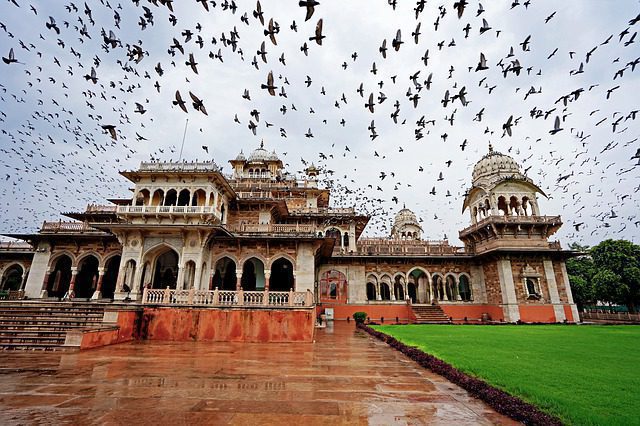
This place is one of the oldest museums of Jaipur and has been attracting visitors and tourists with its wide collection of the city’s culture and heritage. The place which was not open to the common public turned into a public museum in the year 1887.
The building has been made in complete Jaipur style and architecture and thus is a treat to the eyes.
Timings: 9 AM-5 PM, 7 PM-10 PM
Entry Fee: INR 40 Indians, INR 300 foreigners
9. Jagat Shiromani Temple – One of the Oldest Temples in Rajasthan
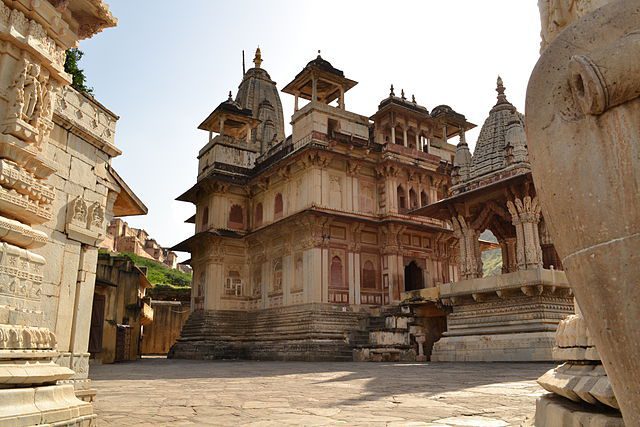
A unique yet the most magnificent attraction in the entire list of historical places in Jaipur is the Jagat Shiromani Temple.
It is located in the Amer Town, Jagat Shiromani is the 17th-century temple in Jaipur, dedicated to Lord Krishna.
The temple displays a fine art of granite, sandstones, and marble and its construction boasts a blend of Hindu, Jain, and South Indian styles of architecture making it one of the most visited monuments in Rajasthan.
Timings: 10 AM-9 PM
Entry fee: Free
10. Chhatris of Gaitore – A Place Worth Adoring
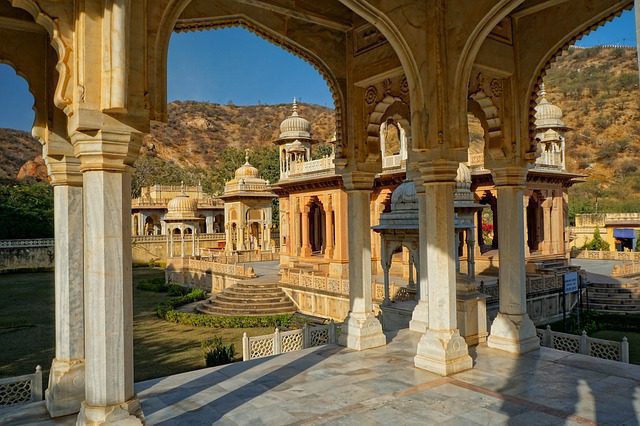
Some 15 km from Jaipur city center, there lies a must-visit attraction – Chhatris of Gaitore. Renowned as the resting place of royal Rajput family members. It is a small valley full of sandstone and grand marble cenotaphs, ornamented with intricate carvings, and constructed on elevated platforms making it one of the must-visit tourist attractions in Jaipur.
These cenotaphs were built in memory of Holkar rulers & their families on the banks of the Khan River and are very near to the Rajwada & nearly 1 km from the Sarafa Bazar.
Entry & Photography is allowed without any fee.
Timings: 10 AM-9 PM
Entry fee: Free
11. Chand Baori Stepwell – Among the Largest Stepwells in the world
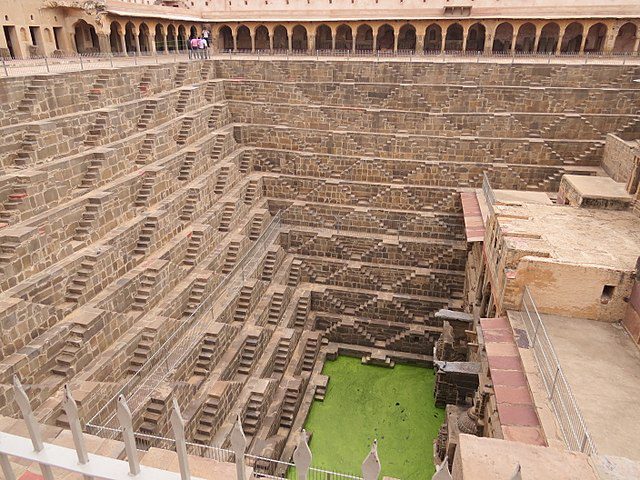
The Chand Baori is a stepwell built over a thousand years ago in the Abhaneri village of Rajasthan.
It was built by King Chanda somewhere in the 9th century. It is one of the largest stepwells in the world and also one of the most beautiful ones.
The monument is a 13-story building and has 3500 steps along with being 100 feet in height. The architecture of the place is truly an inspiration for the Jaipur style of construction.
Timings: 10 AM-5 PM
Entry fee: Free
12. Galta Ji Monkey Temple – The Colony of Monkeys
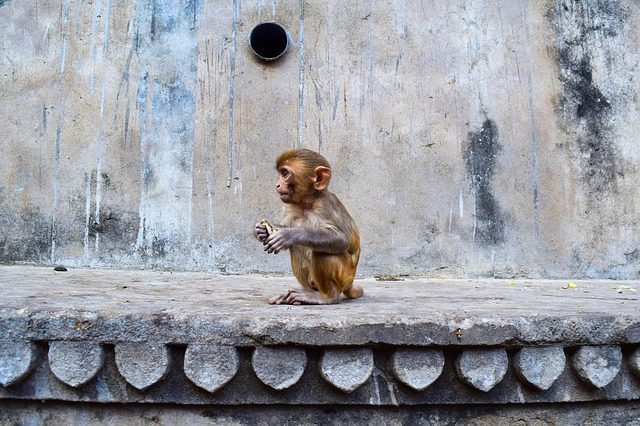
Galta Ji is a large Hindu temple complex that lies 10km to the east of Jaipur. These temples are a popular tourist attraction as they are home to a large colony of monkeys and this has given rise to the common name of the complex, the monkey temple.
Galta Ji Jaipur is a unique Hindu temple as it is centered around a natural spring that has been channeled to fill seven large pools. In these pools, pilgrims come to bathe away their sins while, at quiet moments, the playful monkeys can be found swimming in the holy waters.
Timings: 9 AM-5 PM
Entry Fee: Free, INR 50 for camera
13. Birla Mandir – An Epitome of Spectacular Architecture
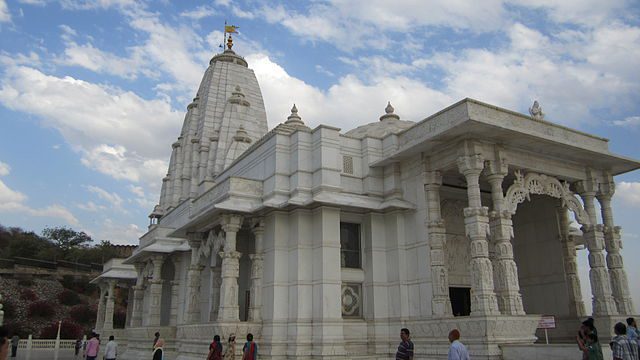
It won’t be wrong to say that this temple is one of the most beautiful temples of Jaipur which has been successful in attracting the tourists and visitors since its construction.
It is a beautiful, splendid, and peaceful pilgrimage site for the Hindu devotees. Located at Moti Dungari Hill’s base, this temple reflects the amazing Jaipur architecture with its white marble design.
Timings: 6 AM-12 PM, 3 PM-9 PM
Entry fee: INR 150 per person
14. Chandpole Gate – The finest of Jaipur Architecture
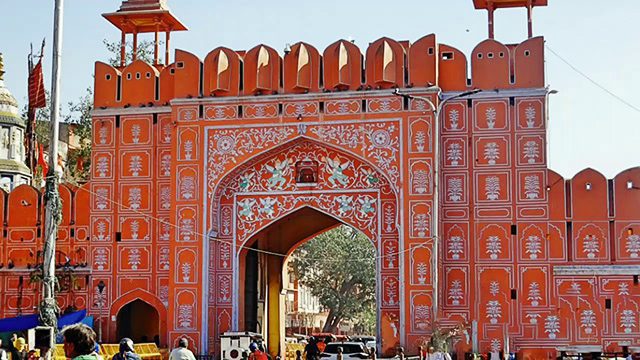
If you want to experience the finest of Jaipur architecture, then nothing can be better than visiting Chandpole Gate. You can get a view of the old bazaar of Jaipur along with delivering a perfect example of the rich culture of Jaipur city.
The design of the monument is so unique that the visitors are often stunned by its beauty and attention to detail.
Timings: 24 hours
Entry fee: INR 2 Indians, INR 10 foreigners
15. Rambagh Palace – Living the Royal Lifestyle

Reckoned the Jewel of Jaipur, Rambagh Palace is a former abode of Maharaja of Jaipur and presently serves as a luxurious heritage hotel in the city.
The palace is a great epitome of an architectural masterpiece which is a combination of Rajasthani and Mughal styles. Apart from its remarkable design, there are spacious verandas, ornamental gardens, and adelic front lawns full of peacocks and other birds.
Along with that, the corridors at Rambagh Palace are well-adorned with hand-painted frescos. If your budget allows, there would be no better place than Rambagh Palace to take a plunge into the ancient royal lifestyle of the Maharajas.



